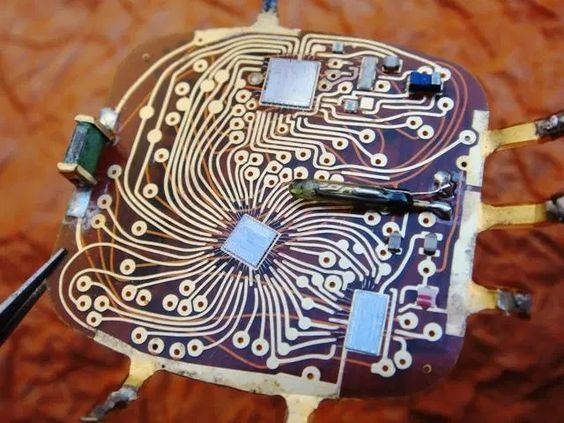Electronic Board Design: Supplier & Component Selection
Electronic board design is at the heart of many technological innovations we encounter daily, from smartphones to home appliances and beyond. The success of any electronic project largely hinges on selecting the right components and suppliers. In this guide, we will delve into the critical aspects of choosing PCB components and reliable PCB component suppliers for your electronic board design projects.
The Internet of Things (IoT) Integration
1.1 The IoT Revolution
One of the most notable trends in electronic board design is the seamless integration of the Internet of Things (IoT). The IoT has transformed the way we interact with technology by connecting devices to the internet, enabling them to collect and exchange data. Electronic boards are at the heart of this revolution, serving as the foundation for countless IoT applications, from smart homes to industrial automation.
1.2 IoT-Enabled Electronic Boards
Electronic boards designed for IoT applications often feature wireless connectivity options like Wi-Fi, Bluetooth, and cellular modules. These boards enable devices to communicate with each other and the cloud, facilitating real-time data collection and remote control. The demand for energy-efficient, compact, and cost-effective IoT boards has led to innovations that cater to these specific needs.
Miniaturization: Smaller, Smarter, and More Powerful
2.1 The Quest for Miniaturization
The drive towards miniaturization in electronic board design is relentless. As technology advances, the demand for smaller and more compact devices continues to grow. This trend is evident in the design of smartphones, wearables, and IoT sensors, where space is often at a premium.
2.2 Nano-Scale Components
Electronic board designers are now working with nano-scale components, pushing the boundaries of what’s possible in terms of size and functionality. Components like System-on-Chip (SoC) solutions combine multiple functions onto a single chip, reducing the overall board size while increasing processing power. This miniaturization trend not only makes devices more portable but also more energy-efficient.

Green Electronics: Sustainable Design
3.1 A Greener Approach
Sustainability has become a key focus in electronic board design. As environmental concerns grow, manufacturers are striving to reduce the environmental impact of their products. Green electronics involve minimizing waste, using eco-friendly materials, and optimizing energy efficiency.
3.2 Eco-Friendly Materials
Electronic board designers are exploring new materials and production techniques to create eco-friendly boards. This includes using recyclable materials and reducing the use of hazardous substances. Additionally, efficient power management is crucial for extending the lifespan of electronic devices and reducing energy consumption.
Electronic Board Design: PCB Component Choosing PCB Components
The selection of PCB components is a pivotal step in the electronic board design process. The performance, durability, and functionality of your final product are directly influenced by the components you choose. Here are some essential considerations:
1. Functionality Requirements: Start by defining the functionality your electronic board needs to deliver. This will help you identify the types of components required, such as microcontrollers, sensors, connectors, and power management chips.
2. Component Compatibility: Ensure that all components are compatible with each other in terms of voltage levels, current requirements, and communication protocols. Mismatched components can lead to functionality issues and potential damage.
3. Quality vs. Cost: Striking the right balance between component quality and cost is crucial. Cheap components may save you money upfront but can lead to reliability issues down the line. Invest in components that meet your project’s quality standards.
4. Lifecycle and Availability: Consider the lifecycle of the components you choose. Components that are readily available and have a long lifecycle will make it easier to maintain and service your electronic boards in the future.
5. Power Efficiency: In many electronic devices, power efficiency is paramount. Choose components that are optimized for low power consumption to prolong battery life and reduce energy costs.
Reliable Electronic Board Design PCB Component Suppliers
Once you have a clear understanding of your component requirements, the next step is to identify reliable PCB component suppliers. A trustworthy supplier can make or break your project. Here’s how to choose the right one:
1. Reputation and Reliability: Research potential suppliers and check their reputation within the industry. Look for reviews, customer testimonials, and case studies to gauge their reliability and customer satisfaction.
2. Quality Assurance: Ensure that the supplier adheres to stringent quality control measures. Ask about their certifications and quality assurance processes to guarantee the components you receive meet the required standards.
3. Product Range: A diverse product range is essential. Suppliers with a wide selection of components can accommodate your varying project needs, from basic to complex designs.
4. Lead Times and Inventory: Timeliness is critical in electronic board design. Check the supplier’s lead times for component delivery and inquire about their inventory levels to avoid delays in your project timeline.
5. Technical Support: Reliable suppliers should offer technical support and assistance when needed. Whether it’s troubleshooting, customization, or advice on component selection, having access to knowledgeable support can be invaluable.
Manufacturer Spotlight: Winow
In the realm of electronic board design, one manufacturer that stands out is Winow. With a solid reputation for both component quality and supplier reliability, Winow has become a preferred choice for designers and engineers worldwide.
Winow offers a comprehensive range of PCB components, from microcontrollers and sensors to connectors and power management solutions. Their commitment to quality assurance ensures that the components they supply meet the highest industry standards.
What sets Winow apart is its dedication to customer satisfaction. They provide excellent technical support and have a reputation for on-time deliveries, making them a dependable partner for electronic board design projects of all sizes.
Conclusion
To create a successful electronic board design, you should consider both the PCB components and the suppliers that provide them. By prioritizing functionality, compatibility, quality, and reliability in your designs, you can create boards that meet or exceed your project’s requirements. Additionally, working with reputable suppliers like Winow can streamline the component procurement process and contribute to the overall success of your electronic board design endeavors.

